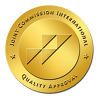Why Does Dental Implant Cost Differ Worldwide?
Dental implant cost varies enormously from one country to another and this disparity is linked to several interconnected factors. Economic conditions and local overhead expenses often top the list. A dental clinic operating in a country with higher living costs and wages will typically charge more for the same procedure compared to a clinic in a region with lower expenses. This difference can be considerable—ranging from slight gaps in some neighboring nations to striking contrasts between wealthier regions and developing ones.
Government policies and healthcare structures also contribute to this worldwide variability. In some countries, dentistry is heavily privatized, driving up prices due to the absence of price regulation. In other places, certain treatments might be partially subsidized or integrated into a public healthcare framework, although implants often stay outside standard coverage. Still, the level of government involvement can influence everything from how clinics price their services to how insurance companies structure their dental plans.
Professional fees—especially for specialized dentists like oral surgeons or prosthodontists—are another underlying cause of global price differences. In high-income countries, these experts often have expensive insurance premiums and higher operating costs, including rent for clinics in urban centers. Dentists in regions with lower overhead may pass some of those savings to patients. This doesn't necessarily mean that quality is compromised in the less expensive locations. Many of these countries have highly trained professionals and modern facilities, but their services can be offered at a more accessible price point due to economic factors.
Material costs also play a significant role worldwide. Top-tier dental implant systems from well-established global manufacturers tend to come at a premium. While the core technology (a titanium or titanium-alloy fixture) stays consistent, the brand and going with research can raise the price substantially. In some regions, clinicians rely on local brands or imported brands that are more cost-effective, often reducing overall patient fees. Yet, experienced dentists generally choose reputable systems with proven track records, ensuring longevity and performance. A thorough discussion with a dental professional about brand quality and available alternatives can help patients balance quality with budget considerations, regardless of where the procedure is performed.
Which Components Contribute to Dental Implant Cost?
When discussing the expense of dental implants, it helps to break down the procedure into its distinct phases. The first step typically involves diagnostic processes, such as consultations, X-rays or 3D imaging. These images help pinpoint the right placement for the implant and highlight any need for preliminary treatments like bone grafting or tooth extractions. While these first examinations and tests add to the total fee, they're critical for successful outcomes and cannot be overlooked.
Once a treatment plan is set, the surgical portion begins. A titanium implant fixture—often the most widely recognized part of the entire process—is placed into the jawbone. Anesthesia costs are part of this stage and they can vary depending on whether local anesthesia, conscious sedation or IV sedation is used. Additional considerations include pre-surgical therapies that might be necessary for patients lacking sufficient bone density. Bone grafts or sinus lifts can correct deficits in the jaw, but they also increase the number of appointments, surgical complexity and final cost.
After the implant is placed, a healing period allows the implant to integrate firmly with the surrounding bone tissue. During this interval, temporary components or protective covers are used and patients typically return for follow-up visits to confirm proper healing. Although these visits are relatively short, they still add to the time and effort put into the overall process.
The final phase is the fabrication and attachment of the prosthetic tooth. Whether it's a single crown or a more extensive solution like a bridge or implant-supported denture, there are laboratory costs to consider. Skilled technicians must craft a tooth replacement that blends seamlessly with the staying natural teeth. High-quality materials—such as premium ceramics or zirconia—can drive up costs because they offer enhanced aesthetics and durability. Even the connecting parts, known as abutments, may have different price tags depending on their design or fabrication technique.
How Do Clinical Factors Influence Dental Implant Cost?
Patient-specific requirements can shift the cost of treatment considerably. A straightforward scenario—involving a single missing tooth in an area with abundant healthy bone—tends to be on the lower end of the price spectrum. However, the complexity rises with each complicating factor. Multiple implants, tricky jaw anatomy or the presence of gum disease can turn a simple procedure into a more intricate, time-consuming one.
For those missing several teeth or who have completely edentulous arches, full-mouth implant restorations are a significant undertaking. Techniques like "All-on-4" or "All-on-6" need multiple fixtures, more planning and a custom-designed prosthesis. While these large-scale procedures may seem expensive at first glance, they often provide a transformative improvement in comfort, function and quality of life.
The condition of existing bone is also central to the final price. Patients with insufficient bone mass often need grafts, which involve using synthetic or natural bone materials to rebuild the jaw's structure. This needs extra surgery, added healing time and more biomaterial expenses. Similarly, a procedure called a sinus lift might be needed in cases where the upper jaw lacks adequate vertical height. Each of these interventions lengthens the overall timeline, making the entire treatment more comprehensive.
What Role Does Dental Insurance Play in Dental Implant Cost?
Despite the undeniable receives help of dental implants, many insurance plans fall short of covering them comprehensively. In countries where private dental insurance is standard, implants often fall under "significant restorative" categories, which tend to be went with by higher copays or partial coverage only. For instance, some plans might cover a certain percentage of the implant or its associated procedures, but typically there's an annual maximum limit. Once that cap is reached, patients must manage the staying costs themselves.
Public healthcare systems in various parts of the world generally reserve implants for medically necessary situations rather than purely elective tooth replacement. This means that unless a patient's condition meets very specific criteria (for example, reconstructive needs after significant trauma or treatment for oral cancer), they're unlikely to receive help from public funding. It's not uncommon for individuals to discover that essential components of the procedure—like a needed bone graft—aren't included in any form of coverage.
Supplemental insurance or specialized dental plans may provide a partial solution, though these often come with waiting periods or steeper monthly premiums. While some new plans are beginning to include implants more often, they're still subject to various restrictions. This landscape leads many patients to consider alternatives for financing, such as taking out personal loans, using medical credit plans or seeking treatment in lower-cost destinations.
Why Is Medical Tourism Linked to Dental Implant Cost Savings?
Rising healthcare costs have contributed to a surge in "medical tourism," where patients travel abroad in search of more budget-friendly treatments, including dental implants. The cost advantage in certain countries is often substantial, with individuals potentially saving a significant percentage on significant procedures. Even after accounting for airfare, accommodations and other travel-related expenses, the final bill can stay notably lower than what a patient would pay closer to home.
This trend isn't confined to a specific region. Patients in North America, Western Europe or affluent parts of Asia may head to countries in Eastern Europe, Southeast Asia or Latin America for equally competent care at a fraction of the local price. Language barriers and logistical concerns are increasingly addressed by clinics that cater to international patients. Many provide interpreters or have multilingual staff; some even coordinate accommodations and airport pickups, offering a seamless experience from arrival to departure.
The key driver behind these cost differences lies in the local economy. Operating a clinic and hiring qualified dental professionals can be less expensive in certain regions, allowing providers to reduce their fees without sacrificing the standard of care. Of course, the quality of clinics abroad can vary, just as it does at home. Thorough research is essential to verify the credentials, technology and patient reviews of any clinic. Reputable facilities proudly display international accreditations, licensure and compliance with established standards.
Is Dental Implant Cost Worth the Investment?
It's true that dental implants can carry a higher price tag than simpler solutions like dentures or bridges. However, the long-term value often becomes clear when evaluating functionality, durability and overall change on quality of life. Traditional dentures can slip or cause discomfort and bridges need changing next healthy teeth. Implants, on the other hand, integrate into the jawbone and act like natural tooth roots, promoting both stability and bone health.
Many studies highlight implant longevity, with high success rates over extended periods. While there's always a possibility of complications like peri-implantitis or component wear, these issues are relatively rare with proper maintenance. Dental implants are also standalone solutions that don't rely on neighboring teeth for support, reducing the risk of collateral damage.
Another point to consider is the indirect savings that might arise from preventing future complications. An implant-supported crown won't need repeated adjustments or replacements as often as a conventional bridge, which typically has a limited lifespan before it must be replaced entirely. Additionally, the fixed stability of an implant can improve chewing efficiency, leading to better nutrition and overall health. Patients often report better confidence, clearer speech and a more natural feel, which can translate into a psychological boost that goes beyond the purely financial aspect.
What Makes Turkey a Promising Destination for Affordable Dental Implant Cost?
While many countries have become hotspots for lower-cost dental collaborate, Turkey has garnered particular attention. This is largely due to a favorable exchange rate that makes high-level treatments significantly more accessible to foreign patients. Major Turkish cities are brimming with modern clinics equipped with advanced technology such as 3D imaging and computer-guided surgery. Turkish dentists often complete rigorous local training and many also pursue more qualifications or experience abroad.
Clinics in Turkey that cater to international visitors commonly bundle procedures with travel assistance—arranging lodging, airport pickups and even local tours in some cases. Patients find that combining a vacation-like experience with dental treatment is both budget-friendly and convenient. The cost saving can stay substantial even after hotel and flight expenses, making Turkey a prime location for those looking to stretch their health budget.
Quality and safety typically match international benchmarks, especially when patients choose accredited clinics. Many adhere to European or global standards, utilizing materials and implants that carry CE or FDA approvals. High-tech methods also support consistent outcomes, with success rates that align with or even exceed those found in more expensive markets.

























